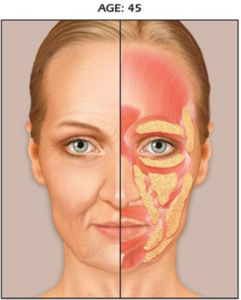Soft-tissue fillers (commercially known as Belotero, Juvederm, Radiesse, Restylane, Sculptra and Voluma) contain some form of hyaluronic acid, a substance that naturally occurs throughout the body, with the highest concentrations in the fluids of the eyes and joints. Collagen, once the most common substance used in soft-tissue fillers, is rarely used today. The effect typically lasts about six to 24 months. After that, additional injections are required to maintain the effect.
Why choose soft-tissue fillers for wrinkles
Soft-tissue fillers can improve the shape, structure and volume of wrinkled skin for up to six months. Soft-tissue fillers provide several benefits, including:
- Volume control: By varying the amount of substance injected, the doctor has better control of the final appearance.
- Treatment control: Injections can be paced gradually over several appointments until desired results are achieved.
- Other benefits: Treatments using hyaluronic acid fillers are less likely to bruise or cause allergic reactions than traditional fillers containing collagen. They also are considered minimally invasive.
-
What to expect after the procedure
Following treatment, ice may be given to ease discomfort and swelling. Avoid applying firm pressure on the treatment area.
How to prepare for the procedure
Before the procedure, an ASDS dermatologist will usually review the patient’s medical history and conduct a physical exam. This is the time for the doctor and patient to discuss expectations, potential risks and outcomes of the procedure. Be sure to tell your doctor if you have:
- Oral herpes or a similar infection
- Diabetes
- Blood-clotting problems
- Lupus
What you should know about soft-tissue fillers for wrinkles
First, the doctor marks the areas to be injected. Then fillers are injected by syringe using very fine needles. Topical numbing agents or anesthetic injections are sometimes applied to ease discomfort.
Possible risks
As with any treatment, there are risks associated it, though they are minimized in the hands of a qualified ASDS dermatologist. These include:
- Bleeding from injection sites
- Swelling and bruising
- Redness and tenderness at injection sites
More serious complications include:
- Severe or prolonged swelling or bruising
- Asymmetry
- Lumps or irregularities
- Infection
- Tissue loss, ulceration and scarring
- Allergic reaction

